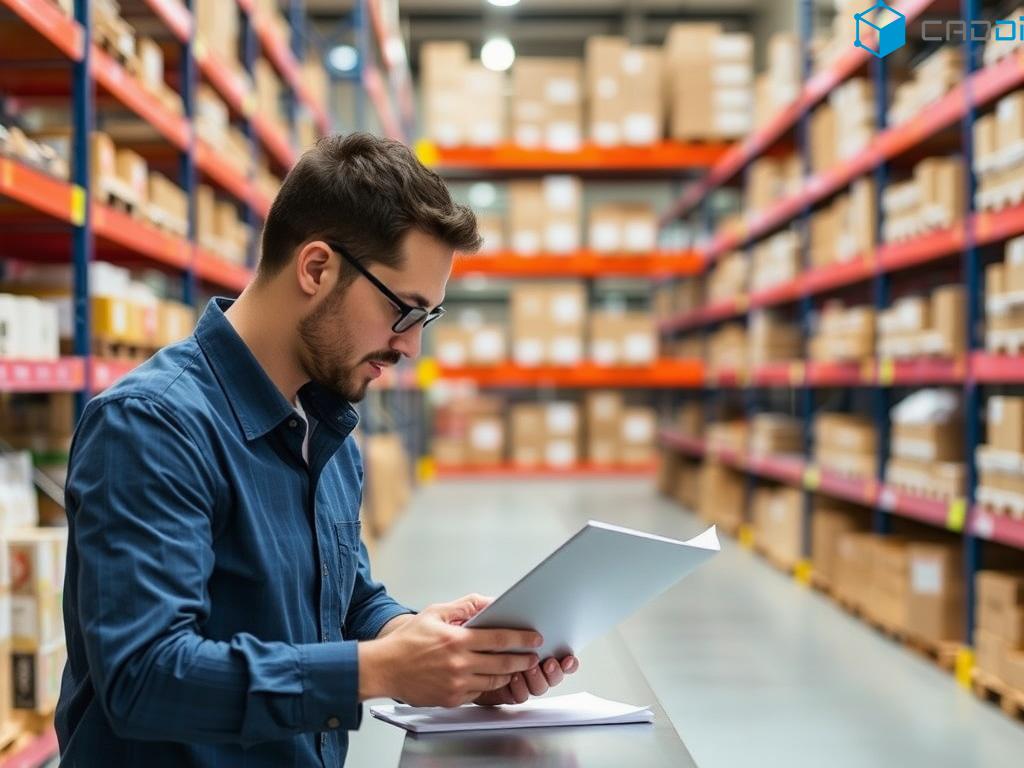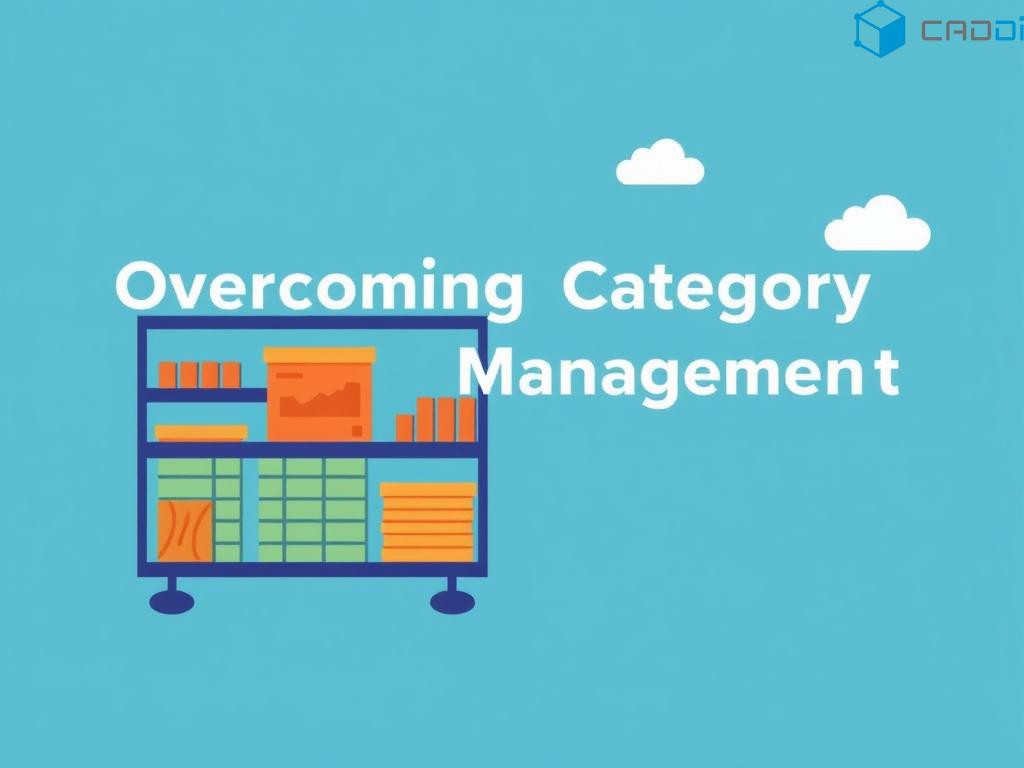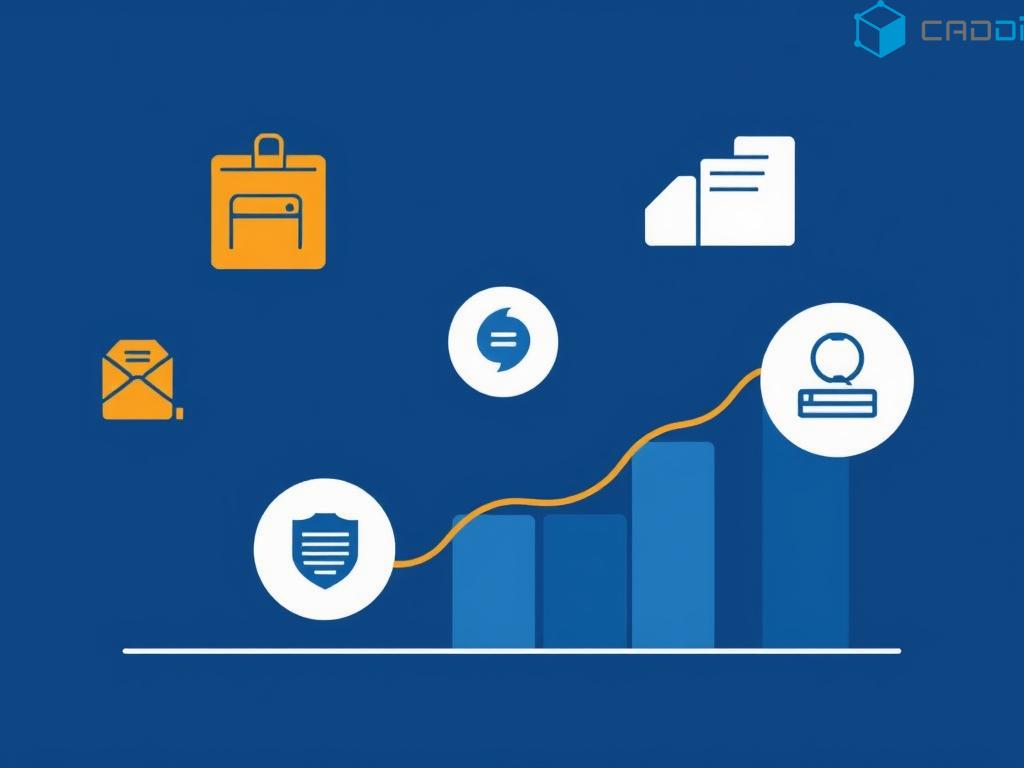Enterprise Website Development: Key Aspects
Content Organization & Navigation
Site Architecture & Performance Optimization
Multi-Channel Integration & Accessibility
Security & Regulatory Compliance
Category management involves organizing products into logical groups or categories. It helps customers easily navigate the site and find desired items, enhancing user experience.
Optimizing Procurement with Strategic Category Management
Defining Procurement Category Management in a Nutshell
Category management streamlines procurement by logically categorizing related goods and services. This strategic approach optimizes sourcing decisions, maximizes cost savings, and drives long-term business growth. At its core, it involves meticulously planning, executing, and monitoring procurement categories to deliver maximum value.

Optimizing Procurement with Strategic Category Management
Key Drivers for Implementing Category Management
Planning for Success: Comprehensive upfront planning defines category objectives, strategies, and measurable goals. This lays a solid foundation for procurement excellence. “Category plans represent 30% of the potential savings in most organizations,” remarks Peter Lipp, a Supply Chain consultant.
Intelligent Sourcing: Strategic sourcing identifies ideal suppliers by evaluating cost, quality, service levels, and risk factors across multiple criteria. This data-driven process fuels smart supplier selection and negotiations. A McKinsey study highlights supply management as a key cost-saving lever, yielding up to 20% savings annually.
Performance Tracking: Ongoing performance evaluations monitor procurement metrics against predefined KPIs. This enables timely course corrections and continuous improvement, ensuring categories remain aligned with evolving business needs.
Fostering Collaboration: Collaborative supplier partnerships foster transparent communication, shared accountability, and mutual growth opportunities. A Deloitte report states 79% of top suppliers prefer closer collaboration with buyers.
While category management optimizes procurement spend, it can inadvertently create supplier monopolies if not properly diversified. Category managers must strike a balance between consolidation benefits and supply chain resilience.
Leveraging Category Intelligence to Stay Ahead
Demand Intelligence: Analyzing consumption patterns, demand forecasts, and user needs empowers organizations to strategically rationalize assortments. P&G effectively uses demand sensing to tailor product mixes.
Market Intelligence: Tracking market dynamics like commodity pricing, regulations, innovations, and competitive moves enables proactive and agile decision-making. Gartner recommends investing in market intelligence for better risk mitigation.
Supplier Intelligence: Evaluating supplier capabilities, past performance, risk profile, and future roadmaps supports strategic partnering. An IBM study revealed companies with high-performing suppliers achieved 6% higher profitability ratios.
How can organizations balance the need for specialized category expertise with the risk of knowledge silos across categories?
Mastering the Four Pillars of Category Management Excellence
Strategic Planning: Holistic category planning aligns strategies with organizational goals, considers total cost dynamics, and seeks competitive advantages. Boston Consulting Group advocates cross-functional collaboration during planning.
| Plan | Plan |
|---|---|
| Opportunity Assessment | Identify saving potentials |
| Category Profiling | Analyze spend, supply markets |
| Supply Positioning | Evaluate bargaining power |
| Develop Category Strategy | Set objectives, plans, metrics |
Supplier Integration: Engaging suppliers as strategic partners fosters innovation, mitigates risks, and optimizes total costs of ownership. Case studies showcase Toyota and P&G’s success through collaborative supplier engagement models.
Process Excellence: Streamlining workflows through automation, governance frameworks, and change management drives efficiency and compliance. A Hackett Group study revealed world-class procurement organizations are 21% more efficient.
People Excellence: Building cross-functional category teams, developing negotiation skills, and fostering supplier-facing capabilities are imperative. According to APQC, leading organizations invest heavily in procurement talent.
While mastering these pillars is crucial, category management’s true power lies in thoughtfully integrating them for maximum synergy and impact.
Navigating Category Management Challenges with Agility
Overcoming Data Fragmentation and Inaccuracies
One of the most significant hurdles is fragmented, inconsistent, and inaccurate data spread across disparate systems. “Poor data quality costs organizations an average of $15 million per year,” warns Gartner. To overcome this:
- Implement data governance policies and master data management practices
- Invest in data cleansing and enrichment solutions
- Leverage emerging technologies like machine learning for automated data classification

Navigating Category Management Challenges with Agility
Combating Change Resistance and Adoption Hurdles
Organizational inertia and resistance to change can stall category management initiatives, even with a robust business case. Strategies to drive adoption include:
- Executive sponsorship and clear incentive structures
- Stakeholder engagement through cross-functional teams
- Comprehensive change management roadmaps with training and communication
Balancing Centralization and Localization Needs
Striking the right balance between centralized control and localized flexibility is an ongoing challenge. Potential solutions involve:
- Hybrid organizational models with centralized strategy and decentralized execution
- Defined decision rights enabling local teams to operate within guardrails
- Leveraging center-of-excellence structures to drive standardization
How can category managers future-proof their strategies amidst evolving global supply chain dynamics and disruptive forces?
Amplifying Value Through Digital Category Management
Spend Analytics and Data Visualization Platforms
Data-driven insights are pivotal for strategic decision-making in category management. Spend analytics platforms offer:
- Spend visibility across categories, suppliers, and business units
- Spend diagnostics to identify optimization opportunities
- What-if analysis capabilities for scenario planning
- Interactive dashboards for intuitive data visualization
McKinsey reports companies leveraging advanced spend analytics realize 5-20% cost reductions.

Amplifying Value Through Digital Category Management
Supplier Relationship Management (SRM) Solutions
Collaborative SRM tools enable seamless engagement with suppliers through features like:
- Supplier scorecards for performance monitoring
- Risk management modules for proactive mitigation
- Innovation portals for capturing new ideas
- Contract lifecycle management for streamlined governance
According to PayStream Advisors, top-performing SRM programs deliver up to 20% savings.
Artificial Intelligence (AI) and Cognitive Technologies
AI holds immense potential to augment human capabilities in category management through:
- Intelligent Spend Classifiers: Automated categorization of spend data
- Cognitive Sourcing Advisors: AI-powered market, pricing, and supplier intelligence
- Robotic Process Automation: For streamlining transactional procurement tasks
- Machine Learning Forecasting: Predictive demand sensing for strategic planning
Accenture predicts AI could boost procurement’s annual productivity by 53% by 2035.
As AI evolves, category managers may need to rethink conventional category definitions and structures to align with dynamically optimized, highly granular categorization models.
By thoughtfully integrating these solutions, organizations can amplify category management’s impact through data-driven decision-making, streamlined processes, and collaborative supplier ecosystems.
Category Management: Driving Procurement Excellence
Understanding Category Management Fundamentals
Category management is an innovative approach that transcends traditional procurement tactics. It treats product categories as strategic business units, fostering data-driven decisions and collaborative supplier partnerships. According to Procurify, effective category management leads to significant cost savings up to 15% through optimized procurement processes and favorable contracts.

Category Management: Driving Procurement Excellence
But the impact extends far beyond just financial gains. Category managers meticulously analyze market trends and consumer preferences to curate product assortments that resonate with customers. This customer-centric mindset enhances satisfaction and solidifies organizational success.
“Category management is a game-changer in procurement, enabling businesses to maximize category value while aligning with broader objectives,” remarks Dr. Michael Essig, Professor of Supply Management at the University of Munich.
As organizations navigate an increasingly complex business landscape, implementing demand management strategies becomes crucial for effective category management implementation.
Real-world Application: A leading consumer electronics retailer leveraged category management principles to streamline its smartphone portfolio. By analyzing sales data and consumer behavior patterns, they identified high-demand models and discontinued underperforming ones. This strategic move optimized inventory levels, reduced overhead costs, and improved customer experience.
Developing Robust Category Strategies
Crafting an effective procurement category plan is paramount to success. Category managers collaborate closely with internal stakeholders and suppliers to define category boundaries, identify key performance indicators (KPIs), and establish benchmarks.
“Effective category management is a continuous cycle of analysis, planning, execution, and optimization,” notes Sheila Petcavage, Director at Corcentric, a leading procurement advisory firm.
Building strategic supplier relationships is another critical pillar. Rather than adversarial interactions, category management fosters collaborative partnerships based on transparency, shared goals, and mutual growth. This synergy drives innovation, ensures timely delivery, and secures favorable contract terms.
However, a common misconception is equating category management solely with cost savings. While cost optimization is a significant benefit, it’s essential to recognize its broader impact on enhancing customer satisfaction, mitigating risks, and driving overall business performance.
Continuous Improvement: The Hallmark of Excellence
To truly harness the power of category management, organizations must embrace continuous improvement processes. Regular performance reviews, supplier audits, and benchmarking against industry best practices are crucial.
| Key Metric | Description | Industry Benchmark |
|---|---|---|
| Spend Visibility | Percentage of spend under management | 80% |
| Supplier Consolidation | Reduction in supplier count | 20% |
| Contract Compliance | Adherence to negotiated terms | 90% |
Implementing technology solutions like category management software can further streamline processes, providing real-time spend visibility and enabling data-driven decision-making.
Open-Ended Question: How can organizations effectively align category management initiatives with their overall business strategy and ensure cross-functional collaboration?
As businesses navigate an increasingly competitive landscape, category management emerges as a powerful catalyst for procurement optimization, customer centricity, and sustainable growth.
Unconventional Perspective: While category management has traditionally been viewed as a procurement discipline, its principles can be adapted to enhance organizational performance across various functions, such as marketing and product development. By fostering a category-centric mindset, businesses can unlock new avenues for value creation and competitive differentiation.
Elevating Supplier Partnerships
Strategic supplier relationships are the cornerstone of effective category management. By fostering trust, transparency, and open communication, organizations can unlock a myriad of benefits.
Case Study: A leading automotive manufacturer implemented a comprehensive category management program, strengthening its relationships with key suppliers. Through collaborative planning and joint cost-reduction initiatives, they achieved a 12% reduction in overall procurement costs while enhancing quality and delivery performance.
Open-Ended Question: How can organizations incentivize suppliers to embrace a category management mindset and foster a collaborative approach to supplier relationship management?
As category management continues to evolve, its principles will become increasingly ingrained in organizational DNA, driving a future where procurement transcends transactional boundaries and becomes a strategic growth catalyst.
Essential Category Management Best Practices
Developing an Effective Procurement Category Plan
Category management begins with a well-crafted procurement category plan that aligns with organizational objectives. This plan serves as a blueprint, guiding sourcing strategies, supplier relationships, and performance metrics. “A comprehensive category plan is the cornerstone of effective category management,” says Dr. Julia Becker, a supply chain expert at MIT. “It enables organizations to proactively address market trends and consumer preferences, positioning them for long-term success.”
Building Strategic Supplier Relationships
Fostering strategic supplier relationships is crucial in category management. By cultivating collaborative partnerships, organizations can leverage the expertise and capabilities of their suppliers to drive innovation, optimize costs, and enhance customer satisfaction. “Successful category management requires a shift from transactional to strategic supplier relationships,” notes a study by the University of Tennessee. “This fosters trust, open communication, and a shared commitment to mutual growth.”
Common Misconceptions about Cost Savings Focus
A common misconception about category management is its sole focus on cost savings. While optimizing procurement costs is a significant benefit, true category management encompasses a broader perspective. It aims to maximize the value of each category while aligning with organizational goals, enhancing customer satisfaction, and improving supply chain efficiency.
Implementing Continuous Improvement Processes
Effective category management is not a one-time exercise; it demands continuous improvement processes. By regularly reviewing performance metrics, organizations can identify areas for optimization, adapt to changing market conditions, and stay ahead of the competition. “Category management is an iterative process,” explains procurement expert Sarah Johnson. “It requires a commitment to continuous learning and improvement, ensuring that strategies remain relevant and aligned with evolving business needs.”
Overcoming Category Management Challenges
Managing Change Resistance in Procurement Teams
Implementing category management can be met with resistance from procurement teams accustomed to traditional methods. Addressing this change resistance requires clear communication, training, and demonstrating the tangible benefits of the new approach. “Change is often met with skepticism,” notes a study by Deloitte. “However, by involving teams in the process and showcasing early wins, organizations can build momentum and foster adoption.”

Overcoming Category Management Challenges
Addressing Data Quality and Visibility Issues
Effective category management relies on accurate and comprehensive data. Inadequate data quality and visibility can hinder decision-making and undermine the entire process. Investing in robust data management systems and fostering cross-functional collaboration can mitigate these challenges. “High-quality data is the fuel that powers category management,” says analytics expert Michael Lim. “Without it, organizations are essentially flying blind.”
Balancing Stakeholder Expectations
Category management involves multiple stakeholders, each with their own priorities and expectations. Balancing these expectations is crucial for successful implementation. Proactive communication, aligning strategies with broader organizational goals, and demonstrating value creation can help navigate this challenge.
Could leveraging advanced technologies like AI and predictive analytics be the key to unlocking the full potential of category management? Share your thoughts!
The Role of Technology in Category Management
Evaluating Category Management Software Solutions
In the digital age, organizations are turning to specialized category management software to streamline processes and gain a competitive edge. These solutions offer features such as spend analysis, supplier performance tracking, and contract management, enabling more informed decision-making.
Integration with Existing Procurement Platforms
To maximize efficiency, category management software must seamlessly integrate with existing procurement platforms. This integration ensures data consistency, reduces manual efforts, and provides a holistic view of the entire procurement lifecycle.
Leveraging AI and Predictive Analytics
One of the most exciting developments in category management is the integration of AI and predictive analytics. These technologies can analyze vast amounts of data, identify patterns, and provide actionable insights, empowering organizations to anticipate market shifts and make proactive decisions.
IT Category Management Considerations
In the realm of information technology, IT category management presents unique challenges. Rapid technological advancements, complex licensing models, and the need for continuous innovation demand a specialized approach. Organizations must stay agile and leverage best practices tailored to the IT domain.
As businesses navigate an increasingly complex global marketplace, category management emerges as a powerful strategy to drive sustainable growth and create long-term value. By embracing best practices, overcoming challenges, and leveraging cutting-edge technologies, organizations can unlock new levels of efficiency, agility, and competitive advantage.
What strategies have you implemented to optimize your category management efforts? Let us know in the comments below!
Unlocking Efficiencies Through Strategic Category Management
Effective category management is key for organizations to streamline procurement processes, strengthen supplier relationships, and drive overall business performance. By treating product categories as strategic units rather than disparate items, companies can optimize resource allocation and capitalize on growth opportunities.
As the retail landscape rapidly evolves, implementing a robust category management system allows businesses to stay ahead of shifting market trends and consumer preferences. According to a Kodiak Hub study, companies leveraging category management strategies see a 20% boost in supplier responsiveness and collaboration.
Managing Change Resistance in Procurement Teams
One hurdle is gaining buy-in from procurement professionals accustomed to traditional methods. Overcoming internal resistance requires providing comprehensive training, setting clear goals, and quantifying the potential cost savings and efficiency gains.
“Transitioning to category management is a major change initiative that impacts workflows across an organization,” explains Dr. Michael Crosby, supply chain management professor at MIT. “Leadership must reinforce the strategic value and facilitate a culture of continuous improvement.”
Addressing Data Quality and Visibility Issues
Lack of accurate, centralized data can hinder effective category analysis and decision-making. Organizations must invest in data management solutions that integrate seamlessly across systems, providing a unified view of spend, supplier performance, and market intelligence.
An informative case study: A multinational food manufacturer implemented a cloud-based spend analytics platform, enabling category managers to consolidate over 80% of enterprise data. This enhanced visibility led to $17 million in annual savings through strategic sourcing and supplier negotiations.
Balancing Stakeholder Expectations
As category managers collaborate cross-functionally, they must balance the priorities of internal business units, procurement teams, and executive stakeholders. Transparent communication and aligned performance metrics are crucial for managing differing expectations.
An open-ended question worth considering: How can organizations foster stronger stakeholder alignment to support category management success?
Leveraging AI and Predictive Analytics
Cutting-edge category management software is increasingly incorporating artificial intelligence and machine learning algorithms. These capabilities enable predictive demand forecasting, price optimization recommendations, and automated supplier risk assessments.
According to Gartner, companies deploying AI for strategic sourcing attain a 25% higher cost reduction within three years compared to non-AI users.
As digital transformation reshapes supply chains, the opportunities for value creation through category management strategies continue to grow. Organizations embracing data-driven insights, collaborative supplier partnerships, and advanced analytic tools will be well-positioned for long-term competitive advantage.
To conclude, here is a table summarizing key relationship between category management and core business outcomes:
| Category Management Focus | Potential Business Impact |
|---|---|
| Market/Consumer Analysis | Enhance Customer Satisfaction & Retention |
| Strategic Sourcing | Reduce Procurement Costs & Mitigate Risks |
| Supplier Collaboration | Drive Innovation & Improve Delivery Performance |
| Performance Monitoring | Increase Operational Efficiencies & Profitability |
In many ways, effective category management encapsulates the future of strategic procurement and supply chain excellence. What examples have you seen of companies successfully leveraging this approach? I’m interested to hear your perspective.
Uncovering the Power of Category Management
Defining Category Management: A Strategic Approach to Procurement Optimization
Category management is an innovative, data-driven strategic sourcing approach that treats product categories as strategic business units. It goes beyond managing individual products to analyzing market trends, consumer preferences, and competitive landscapes. This holistic perspective empowers organizations to develop tailored category strategies that maximize value, enhance customer satisfaction, and drive overall business performance.
According to procurement expert Michael Lamoureux, “Category management revolutionizes how companies approach procurement by aligning resources with customer needs through comprehensive data analysis and collaborative supplier relationships.”
At Its Core: Managing Product Categories as Strategic Units
The heart of category management lies in its core focus – managing product categories as strategic business units. This mindset shift involves proactively identifying, evaluating, and selecting suppliers that align with organizational goals while fostering collaborative, mutually beneficial supplier relationships.
Moreover, it entails tracking and evaluating performance metrics from multiple angles, setting benchmarks, and continually refining strategies based on results. This cyclical process ensures that categories remain optimized and adaptable to dynamic market forces.
An unconventional viewpoint from CADDi Drawer, a cloud-based drawing management platform: “AI-driven category management can unlock new avenues for innovation by seamlessly integrating real-time market intelligence, streamlining decision-making processes.”
The Linchpin: Analyzing Trends to Craft Winning Strategies
At the heart of effective category management lies an intricate web of relationships between category managers, suppliers, internal business units, and procurement teams. This interconnected ecosystem thrives on open communication, shared objectives, and a deep understanding of customer needs.
A key responsibility of category managers is to meticulously analyze market trends and consumer preferences, leveraging data-driven insights to inform category strategies. This approach empowers organizations to optimize resource allocation, mitigate risks, and capitalize on growth opportunities, ultimately driving profitability and long-term success.
As procurement expert Tanya Harris notes, “The true power of category management lies in its ability to align product offerings with evolving customer demands, fostering a continuous cycle of value creation and customer loyalty.”
Maximizing Impact: Developing Tailored Category Strategies
Effective category management hinges on developing tailored category strategies based on customers’ needs and willingness to pay. This dynamic process encompasses assortment planning, pricing strategies, and constant refinement to meet shifting market demands.
By leveraging comprehensive data insights, organizations can optimize product mixes, negotiate favorable supplier contracts, and streamline procurement processes. This strategic approach not only enhances customer satisfaction but also drives operational efficiency and cost savings.
According to a recent study by Gartner, companies that implement category management strategies can achieve cost reductions of up to 15% while improving supplier responsiveness by 20%.
An open-ended question for procurement professionals: How can you leverage category management to drive innovation and introduce new product offerings that cater to emerging customer needs?
Performance Tracking: The Cornerstone of Continuous Improvement
Underpinning the success of category management is the meticulous tracking and evaluation of performance metrics. This involves setting clear objectives, monitoring progress against benchmarks, and continuously adapting strategies based on data-driven insights.
By fostering a culture of continuous improvement, organizations can ensure that their category management initiatives remain agile, responsive, and aligned with evolving business objectives. This commitment to ongoing optimization not only strengthens supplier relationships but also enhances overall supply chain efficiency.
As procurement expert Dr. Robert Handfield emphasizes, “Performance tracking is the backbone of category management, enabling organizations to identify areas for improvement, mitigate risks, and capitalize on emerging opportunities.”
| Key Performance Indicators | Description |
|---|---|
| Cost Savings | Measuring reductions in procurement costs through strategic sourcing and supplier negotiations. |
| Supplier Performance | Evaluating metrics such as on-time delivery, quality, and responsiveness to identify high-performing suppliers. |
| Demand Forecasting Accuracy | Analyzing the accuracy of demand forecasting models to optimize inventory levels and reduce waste. |
| Customer Satisfaction | Monitoring customer feedback and loyalty metrics to gauge the effectiveness of category strategies. |
An open-ended question for supply chain professionals: How can advanced analytics and AI be leveraged to enhance the accuracy and efficiency of performance tracking in category management?
The Path Forward: Embracing Demand Management as a Strategic Enabler
As category management continues to evolve, the integration of demand management strategies is becoming increasingly crucial. By analyzing spend data, conducting market research, and collaborating with suppliers, organizations can identify inefficiencies, uncover innovation opportunities, and align product offerings with customer preferences.
This demand-centric approach not only reduces costs but also enhances customer satisfaction by ensuring that product assortments resonate with market demands. Leveraging demand management principles, organizations can consolidate expenses within categories, negotiate better terms and pricing with suppliers, and continuously refine product offerings to stay ahead of the curve.
According to a study by the University of Tennessee, organizations that effectively incorporate demand management into their category management strategies can achieve up to a 30% reduction in the likelihood of supply chain disruptions.
As the procurement landscape continues to transform, category management stands as a beacon of strategic innovation, empowering organizations to navigate complexity, foster supplier collaboration, and deliver exceptional value to customers. By embracing this holistic approach, businesses can unlock a competitive edge, drive long-term growth, and redefine the boundaries of procurement excellence.
Category Management: Frequently Asked Questions
**What is the fundamental distinction between category management and conventional procurement approaches?**
Traditional procurement primarily focuses on managing individual products or transactions. In contrast, category management treats related products as strategic units, fostering a holistic perspective that analyzes market dynamics, consumer preferences, and supplier capabilities. This comprehensive approach optimizes resource allocation, enhances customer satisfaction, and drives overall business performance.
**How does category management enhance supplier collaboration?**
Category management promotes the development of collaborative, mutually beneficial partnerships with suppliers. By fostering open communication, shared objectives, and a deep understanding of each other’s capabilities, organizations can leverage supplier expertise to drive innovation, mitigate risks, and optimize total costs. This collaborative approach leads to improved delivery performance, quality, and long-term value creation.
**What is the role of data analytics in category management?**
Data analytics plays a crucial role in category management by providing insights into market trends, consumer behavior, spend patterns, and supplier performance. By leveraging advanced analytics tools, organizations can make informed decisions, optimize product assortments, negotiate favorable contracts, and continuously refine strategies based on data-driven insights. This analytical foundation empowers organizations to stay agile and responsive to evolving market dynamics.
**How can organizations mitigate the risk of knowledge silos across categories?**
To prevent knowledge silos, organizations should foster cross-functional collaboration and knowledge sharing across category teams. Implementing centralized knowledge management systems, hosting regular knowledge-sharing sessions, and promoting cross-training opportunities can help disseminate insights and best practices. Additionally, establishing clear governance frameworks and decision-making protocols can ensure consistent application of category management principles across the organization.







